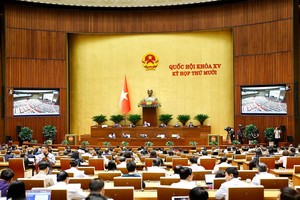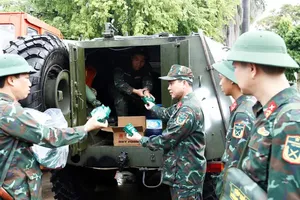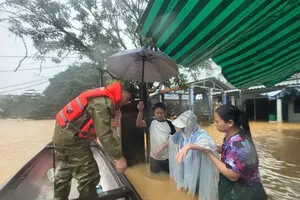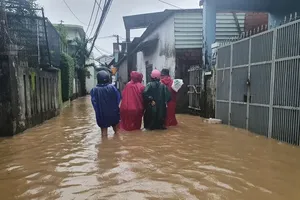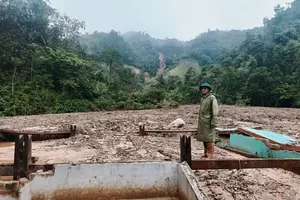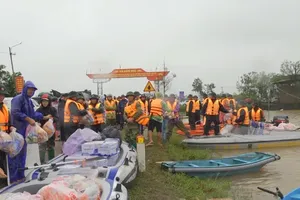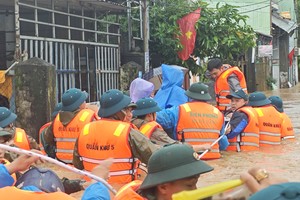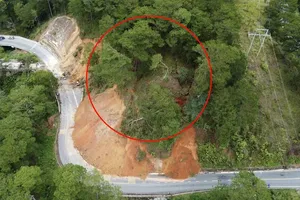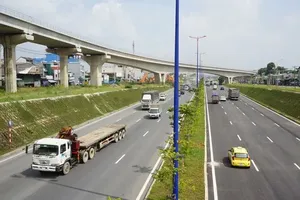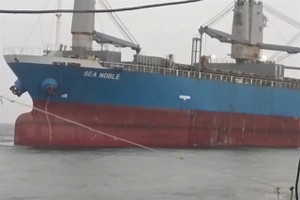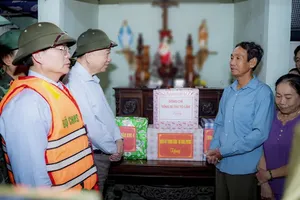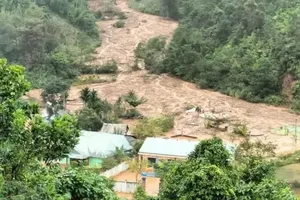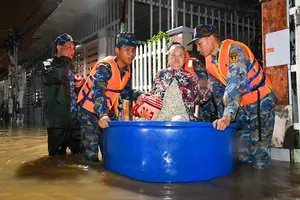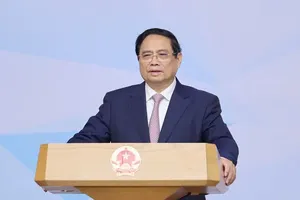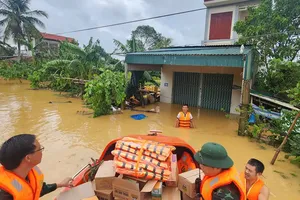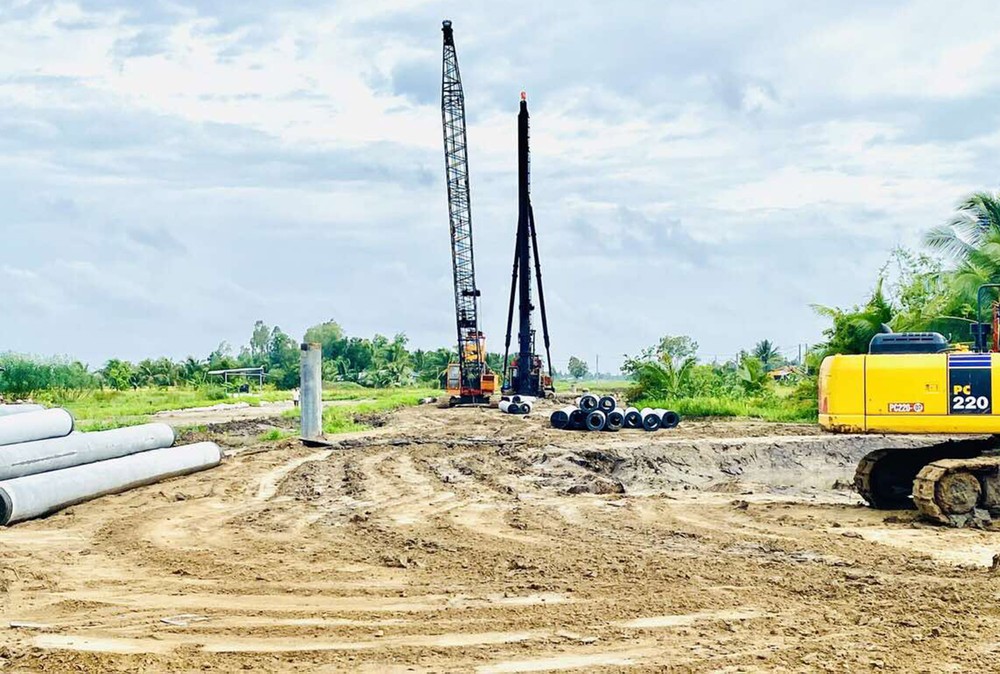
Regarding the solution of landfilling for the highway foundation until the new Law on Geology and Minerals takes effect, the National Assembly has issued resolutions allowing specific mechanisms for mineral exploitation. This includes matters related to increasing capacity, extending mining operations, and simplifying procedures, which are currently being implemented quite effectively.
Deputy Prime Minister Tran Hong Ha stated that specific criteria regarding geotechnical aspects and environmental protection are essential prerequisites, especially for regions with lack of construction materials, such as the Mekong Delta region. The Prime Minister has personally visited this region twice, and deputy prime ministers and ministers have also held numerous meetings on this matter. Currently, the projected supply schedule and achievable capacity have been clearly defined, leading to three proposed solutions.
Firstly, extensive research, evaluation, and testing have been conducted on saline sand sources. The Ministry of Transport has issued technical guidelines covering extraction technology, landfill methods, assessments of geotechnical properties, material strength, and environmental impact.
According to the Ministry of Transport, the K95 sub-grade is not prohibitively expensive. By combining geothermal materials, all marine sand can be effectively isolated during the landfill process. Proper implementation will ensure environmental control with minimal impact. The coastal sand in Soc Trang Province in the Mekong Delta primarily consists of large particles from riverbeds, which can precisely meet specific requirements. It is essential to evaluate and conduct experiments for each mining area and project.
In particular, it is a prerequisite that responsible agencies and ministries should set out criteria on the mechanical aspect and environmental protection issues. In his role of managing inter-sectoral, inter-regional and local issues, the Prime Minister has directed the issuance of Decree 157, which has simultaneously addressed two goals.
First, local administrations are responsible for assessing and exploiting inland ports and rivers, canals and streams to implement through-routes, and at the same time take advantage of this material.
After a preliminary assessment, Tien Giang and Ben Tre provinces have more than 45 million tons, and can fully take the initiative to supply sand for the highway. The Government and the Prime Minister have directed the addition of other sources, including research on the use of crushed stone; and at the same time, the import of sand materials from neighboring countries such as Cambodia will be under consideration.
Minister of Natural Resources and Environment Dang Quoc Khanh said that the Ministry has assessed the reserves and areas for exploitation in accordance with the National Assembly’s 8 resolutions on the supply of fill materials for national key projects and expressway projects. The Government and the Ministry of Natural Resources and Environment (MONRE) have issued several guidelines on providing construction materials for these projects.
According to the current regulations, the supply of fill material from mines has not been classified or grouped. The draft Law on Geology and Minerals submitted to the National Assembly addresses this by categorizing minerals into four groups, with the fourth group including soil, rock, and gravel. This category is streamlined for local authorities, and mining operators only need to register rather than obtain a mining license, after which they must fulfill tax obligations as prescribed.
Regarding the option of using sea sand, the Prime Minister has directed MONRE and relevant ministries and agencies such as the Ministry of Construction, the Ministry of Science and Technology, and the Ministry of Transport to study the use of sea sand. Currently, the pilot project of the Ministry of Transport has successfully utilized sea sand for filling and road construction.
He revealed that the MONRE has been tasked with assessing the reserves and areas for sea sand extraction. The Ministry has completed the evaluation project in Soc Trang Province where an immediately available reserve of approximately 145 million cubic meters can be extracted. The site is located about 20 kilometers from the coast, with a depth of approximately 7 meters. However, MONRE advises that if sea sand is extracted, it should be limited to a depth of around 2 meters to minimize environmental impact. Sea sand reserves are substantial, and in practice, sea sand has been used for land reclamation and in various coastal economic and industrial projects.
There are concerns about potential salinization, so careful environmental impact assessments are necessary. Depending on the specific project and its scale, the impact will be evaluated accordingly. If sea sand is used as a construction material, the Ministry of Construction, as the governing body for construction materials, will establish standards and regulations for its use, including guidelines on how and where to incorporate it.
Minister of Construction Nguyen Thanh Nghi said that standards for salt-contaminated sand have been developed and promulgated
According to him, the Ministry of Construction has developed standards for construction materials and it has promulgated and transferred to competent authorities relatively complete standards, technical regulations and economic and technical norms on the treatment and use of ash, slag, and gypsum as raw materials for the production of construction materials and in construction works.
A total of 19 standards, 1 regulation, 7 technical guides and three economic and technical norms have been issued for areas such as raw materials for the production of cement, mortar, concrete, rolled concrete and soil for road materials and filling materials.
For salt-contaminated sand, the Ministry of Construction has developed and promulgated standards for salt-contaminated sand for concrete and mortar. Specifically, for salt-contaminated sand used as road filling material, the Prime Minister has assigned the Ministry of Transport to take the lead in developing a project to study, evaluate and pilot the use of sea sand for road construction. He disclosed that the Ministry of Transport has completed the pilot project and reported to the Prime Minister.
Accordingly, the Ministry proposes that people's committees in cities and provinces continue to implement the pilot project to expand the use of sea sand for the construction of transport works based on the needs and actual conditions of each project in localities.
